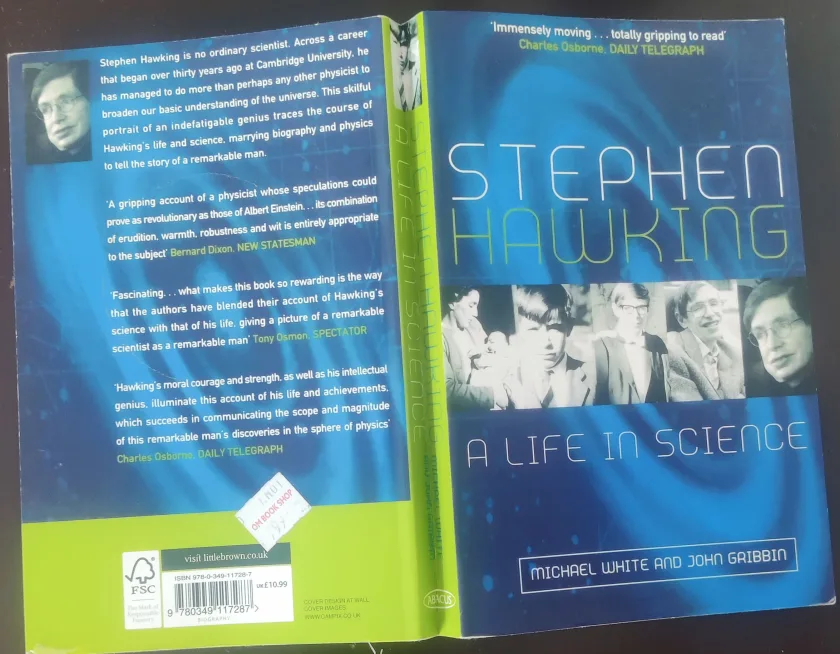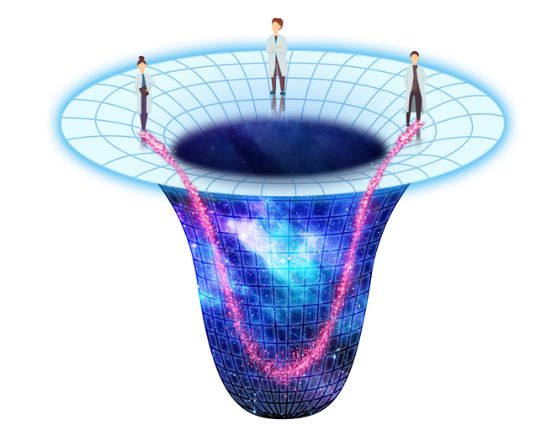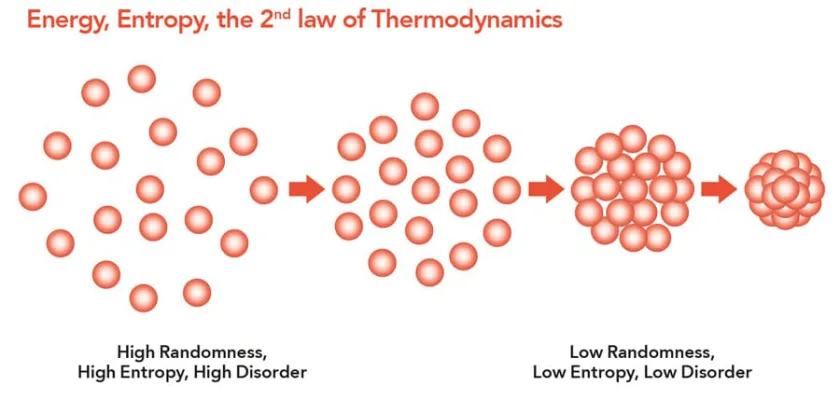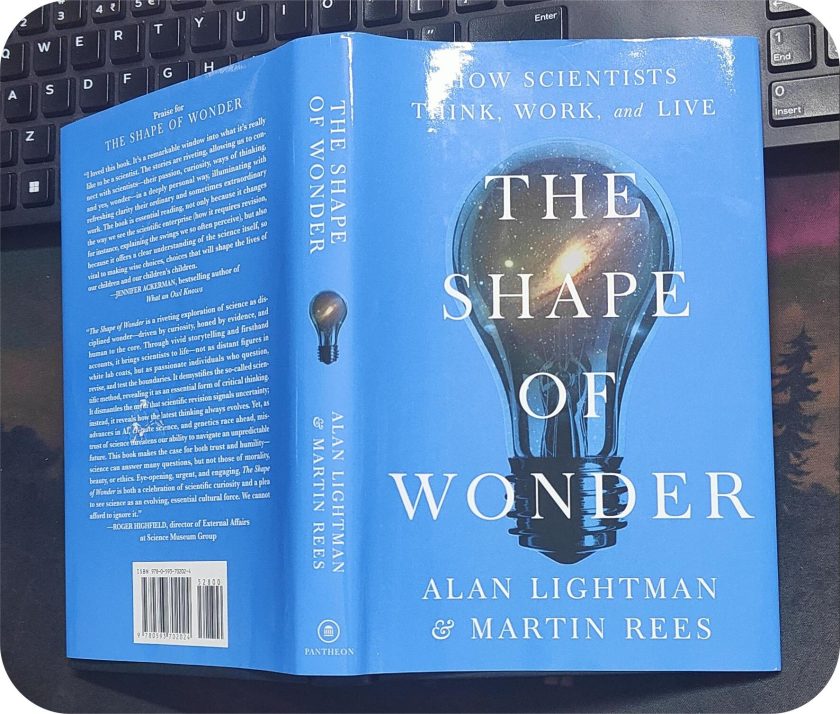
Michael White and Dr John Gribbin, adept science writers, have masterfully depicted an indomitable genius and an expansive scientific intellect in the book – Stephen Hawking: A Life in Science. It was first published in 1992.
As I read the pages of this book, I’m struck by how the writers effortlessly blend clear explanations of Hawking’s scientific achievements with a heartfelt account of his personal life. Their approach allows readers like me to gain a deeper understanding and appreciation for both facets of his remarkable journey.
The book recounts how at the age of 21, just before his marriage, Hawking was given a grim prognosis of only two years to live due to amyotrophic lateral sclerosis (ALS). Despite this, he defied the odds and lived for 55 years, surpassing all expectations and breaking records for longevity with the condition. However, the shadow of mortality always lingered over him. Part of his appeal came from this vulnerability, as well as from the contrast between his brilliant mind and his frail body.
In terms of his personal life, the book highlights the role of Jane Wilde, who married Hawking shortly after his ALS diagnosis. Jane’s unwavering dedication and selflessness were evident as she cared for him and their three children for 25 years. However, their marriage eventually ended when Hawking moved in with Elaine Mason, his caregiver. It’s worth noting that Mason was married to the person who had adapted Hawking’s computer for his wheelchair.
The authors effectively traced Hawking’s influence on the development of cosmology. They utilized his own words to illustrate how he integrated fresh evidence into mathematical models, shedding light on the connection between black hole and the expanding universe. Additionally, they propose that Hawking could be viewed as carrying on Einstein’s pursuit of a unified theory of physics, a lofty ambition indeed. However, the book emphasizes that his achievements were often the product of collaboration with other scientists, notably mentioning Roger Penrose.
Hawking’s Early Work: Black Holes & Spacetime Singularities
The book starts with Hawking’s doctoral studies at the University of Cambridge. During that period, he immersed himself in a relatively niche area of mathematical physics, where he applied Einstein’s general theory of relativity to the phenomenon of massive objects collapsing under their own gravitational force. This occurred before the term “black holes” was coined, a term made popular by physicist John Wheeler in 1969.
A decade passed before astronomical observations validated the existence of black holes by detecting their gravitational influence on nearby stars. In the mid-1960s, the concept was not taken seriously by many outside a small group of theorists, presenting a daunting yet potentially unrewarding task for a doctoral candidate.
At the same time, another talented English physicist, Roger Penrose, showed that based on Einstein’s theory, these objects would inevitably collapse to a point of infinite density called a singularity – a critical breakdown in the structure of spacetime.
At first, there was minimal apprehension regarding these spacetime singularities as they were believed to be hidden within black holes. Nevertheless, Hawking grasped Penrose’s discoveries and broadened them into a thorough depiction of the entire universe.

From Singularity to Big Bang
When an object collapses into a singularity, it gives rise to a black hole. In contrast, reversing the equations provides a mathematical representation of a Universe expanding from a singularity. Hawking and Penrose collaborated to illustrate that our expanding Universe emerged from a singularity at the beginning of time, under the assumption that Einstein’s general theory of relativity remains valid.
As they completed their research, astronomers made a groundbreaking discovery: background radiation saturating the cosmos, linked to the lingering energy from the dense fireball during the Universe’s birth. Initially a theoretical endeavor, their work transitioned into a notable contribution to the forefront of scientific discourse in the 1970s.
Building upon this revised research and supplemented by further observations, scientists pinpointed the Universe’s birth around 13.8 billion years ago, coinciding with the event known as the Big Bang. Hawking’s achievement of his Ph.D. serves as a testament to the significance of this milestone.
Hawking’s Transition: From Universe Origins to Black Hole Fate
Shifting from unraveling the Universe’s origins to unraveling the fate of black holes, Hawking immersed himself in their mysterious characteristics. Known for their powerful gravitational pull, which traps even light, black holes were once believed to be eternal in 1970.
Surrounding the unobservable singularity is an event horizon – a spherical boundary permitting entry but blocking exit, even for light. Hawking’s insight was in understanding that the event horizon’s surface area must continually expand, indicative of matter ingestion or remaining constant in the absence of intake.
This idea is consistent with entropy in thermodynamics, representing the level of disorder within a system. For instance, as an ice cube melts in a glass of water, the previously orderly arrangement transforms into disorder, thereby increasing the entropy within the glass.
Entropy always tends to increase or, at best, remain constant, much like the area of a black hole. This implies that as things become simpler, information is lost. There is more complexity and thus more information in a mixture of ice and water compared to water alone.
Hawking demonstrated, following a suggestion from physicist Jacob Bekenstein, that the area of a black hole serves as a measure of its entropy. Consequently, anything that falls into a black hole becomes disordered and lost, akin to the process of a melting ice cube. There is no remaining record or information about the matter that entered the black hole.
Thus, Hawking established a connection between 19th-century physics’ fundamental principle of thermodynamics and the 20th-century cornerstone theory of general relativity. He bridged these two fields, highlighting their interdependence and significance in understanding the universe.

Exploration of the Relationship Between Entropy, Temperature, and Black Holes
Initially aiming to demonstrate that black holes lacked temperature, Hawking reversed his stance upon realizing evidence to the contrary. Notably, one of his lectures was titled “Black Holes Ain’t as Black as They Are Painted.” To explain how black holes emit energy and possess temperature, he incorporated quantum theory.
He utilized quantum physics’ prediction of virtual particle pairs spontaneously arising and annihilating to maintain quantum balance. He realized that near a black hole, one particle from a virtual pair might fall in while the other escapes. Externally, it seems like particles are emitted from the event horizon, draining energy, and shrinking the black hole. This became known as “Hawking radiation” after its mathematical validation, providing a way to measure a black hole’s temperature.
Hawking showed that combining quantum physics and relativity theory offers new insights into the Universe. The link with thermodynamics persists: as a black hole’s area decreases, entropy seemingly reverses. Physicists suggest this implies lost information could be recovered from emitted radiation during evaporation.
Exploring Inflation and the Multiverse
We all know that in his later years, Hawking focused on the theory of inflation, which aims to explain how the Universe rapidly expanded from a tiny, dense “seed” at the beginning of time. He investigated how this seed might have originated from quantum fluctuations, similar to those observed near black holes, where pairs of virtual particles spontaneously appear and annihilate. This research was part of his broader exploration into the fundamental origins and dynamics of the cosmos.
Hawking also supported the idea of the multiverse, proposing that our Universe is merely one of numerous bubbles existing within the fabric of spacetime. Although these fields of study garnered considerable attention, they also received contributions from various other researchers.
While these ideas were not solely attributed to Hawking, his contributions played a crucial role in advancing our understanding of the cosmos and stimulating scientific inquiry in these areas.

Takeaway
Stephen Hawking and Albert Einstein share a connection forged by their profound influences on theoretical physics. Just as Einstein’s name is synonymous with his revolutionary theories of relativity, Hawking’s legacy is marked by his pioneering work on Hawking radiation, which he proposed as particles emitted by black holes.
This groundbreaking contribution firmly cements Hawking’s esteemed reputation and enduring influence in the scientific community, echoing Einstein’s lasting legacy in the field of physics.
As someone who isn’t a scientist, I’m fascinated by concepts like the creation of the universe, black holes, quantum fluctuations, multiverses, spacetime fabric, and time travel. In this book, the authors have managed to explain these complex ideas in simple terms and with plenty of metaphors, which I really appreciate. I’ve noticed a similarity with Stephen Hawking in this regard. His ability to explain intricate concepts using accessible language, vivid metaphors, and a touch of humor is truly impressive. In fact, it’s thanks to him that I’ve developed an interest in cosmology.
I highly recommend this book to anyone with an interest in science who is seeking an engaging and accessible read. It offers a unique blend of scientific exploration and biography, making it a captivating choice for both enthusiasts and newcomers to the field.



